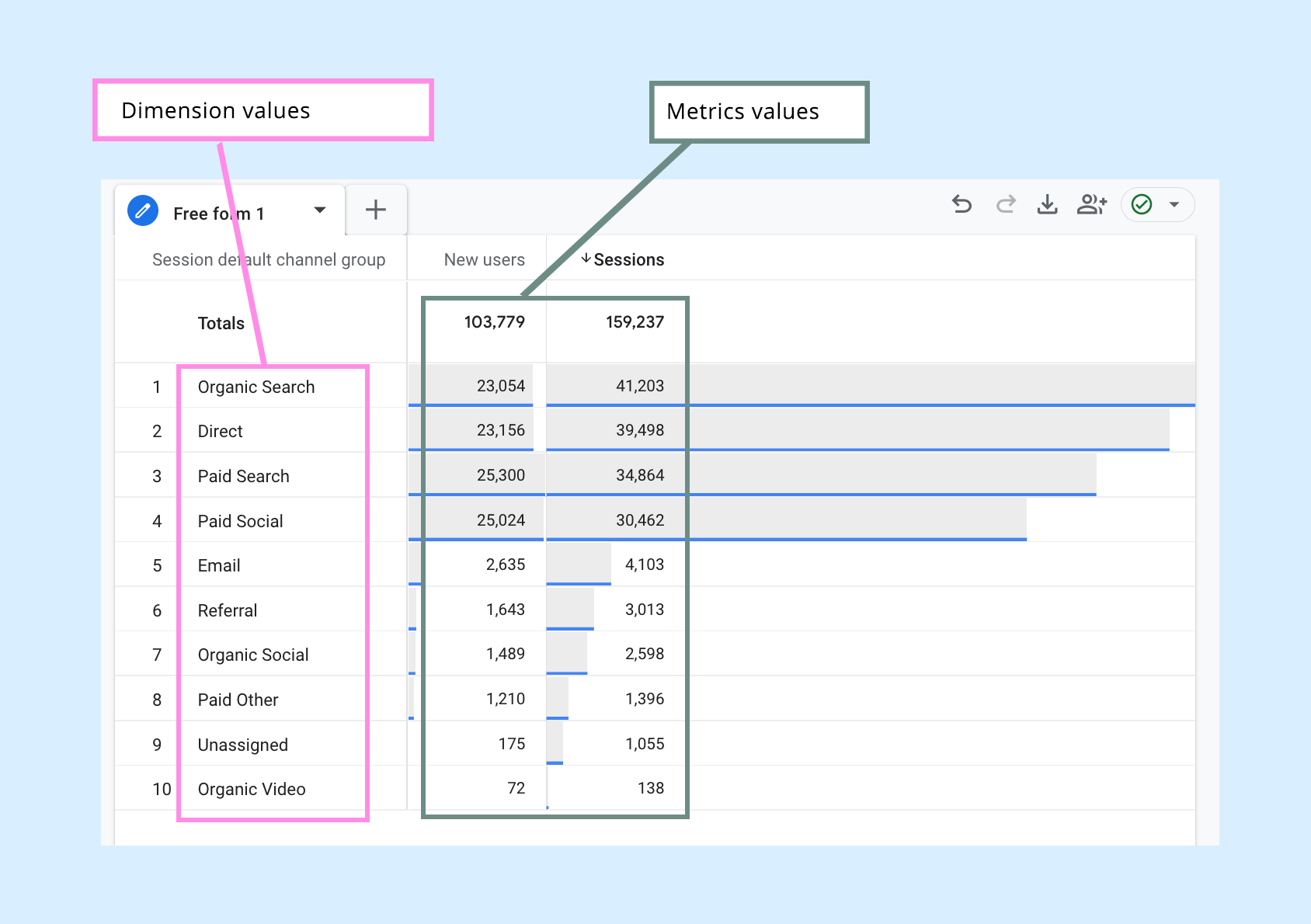Utilizing Secondary Dimension in Google Analytics for Enhanced Reporting
Utilizing Secondary Dimension in Google Analytics for Enhanced Reporting
Blog Article
Opening the Power of Second Dimension Analytics for Improved Information Insights and Decision-Making
In the world of information analytics, key measurements commonly take the limelight, however the true deepness of understandings lies within the realm of second measurements. By taking advantage of the power of additional dimension analytics, companies can reveal covert trends, reveal relationships, and essence much more meaningful verdicts from their data.
Importance of Second Measurements
Exploring the significance of additional dimensions in analytics introduces the concealed layers of data understandings important for informed decision-making in numerous domains. Secondary measurements provide a much deeper understanding of primary information by providing added context and point of views. By incorporating additional dimensions right into analytics, organizations can draw out more extensive and nuanced understandings from their datasets.
One secret relevance of additional measurements is their ability to sector and categorize primary information, enabling a much more detailed evaluation of specific subsets within a dataset. When looking at the information as a whole, this division enables services to recognize patterns, trends, and outliers that may not be noticeable. Moreover, additional measurements aid in uncovering connections and dependences in between different variables, resulting in even more exact projecting and anticipating modeling.
In addition, secondary measurements play a crucial function in improving data visualization and reporting. By adding secondary dimensions to visualizations, such as graphs or graphes, experts can develop a lot more useful and informative depictions of data, promoting better interaction of searchings for to stakeholders. Generally, the assimilation of second dimensions in analytics contributes in opening the full capacity of data and driving evidence-based decision-making.
Key Benefits of Utilizing Second Measurements
Making use of secondary dimensions in analytics offers companies a tactical benefit by increasing the depth and granularity of information insights. By exploring data utilizing secondary dimensions such as time, area, gadget kind, or user demographics, companies can uncover patterns, patterns, and correlations that may or else remain concealed.
Furthermore, the use of additional measurements boosts the context in which key data is translated. By leveraging second measurements in analytics, companies can harness the complete possibility of their information to drive far better decision-making and attain their organization purposes.
Advanced Information Evaluation Strategies
A deep dive right into innovative information evaluation strategies discloses innovative techniques for drawing out useful understandings from complicated datasets. One such method is maker discovering, where algorithms are utilized to identify patterns within data, predict outcomes, and make data-driven choices. This approach enables for the automation of analytical model building, making it possible for the handling of big volumes of data at a faster pace than typical approaches.
An additional innovative method is predictive analytics, which makes use of statistical formulas and maker knowing techniques to anticipate future results based description on historic information. By examining fads and patterns, services can prepare for client habits, market fads, and potential threats, encouraging them to make positive decisions.
In addition, text mining and sentiment evaluation are important strategies for drawing out insights from disorganized data resources such as social networks remarks, client testimonials, and survey responses. By examining text information, organizations can comprehend customer viewpoints, identify emerging fads, and improve their product and services based on responses.
Enhancing Decision-Making Through Second Dimensions

Enhancing decision-making through secondary dimensions makes it possible for businesses to make more notified and targeted critical selections. As an example, by segmenting client information based upon second measurements like purchasing history or interaction levels, business can customize their advertising and marketing strategies to particular audience sections, causing boosted conversion prices and consumer satisfaction. Furthermore, secondary dimensions can aid recognize relationships and partnerships in between different variables, allowing organizations to make data-driven decisions that drive development and productivity.
Implementing Second Measurement Analytics
When incorporating second dimensions in analytics, companies can unlock deeper understandings that drive tactical decision-making and boost general efficiency. This entails comprehending the certain inquiries the organization looks for to address and the information factors required to resolve them.

Furthermore, organizations must utilize advanced analytics tools and modern technologies to streamline the process of integrating second measurements. These tools can automate data processing, evaluation, and visualization, permitting companies to focus on translating insights instead than hand-operated information manipulation.
Conclusion
Finally, second measurement analytics play a crucial role in improving data insights and decision-making processes. By using innovative information evaluation strategies and applying secondary dimensions effectively, organizations can unlock the power of their data to drive strategic company decisions. The essential benefits of utilizing secondary dimensions can not be overstated, as they provide a much deeper understanding of information fads and partnerships. It is crucial for companies to utilize additional measurement analytics to stay competitive in today's data-driven landscape.
In the realm of data analytics, key measurements frequently take the spotlight, yet the true depth of understandings lies within the realm of second dimensions.Utilizing second dimensions in analytics supplies companies a tactical benefit by increasing the depth and granularity of information insights. By leveraging second measurements in analytics, organizations can harness the complete potential of their Going Here information to drive better decision-making and attain their service goals.
Implementing information validation procedures and regular audits can aid maintain information quality and integrity.
By utilizing innovative data evaluation techniques and carrying out secondary dimensions properly, organizations can open the power of their data to drive calculated business decisions.
Report this page